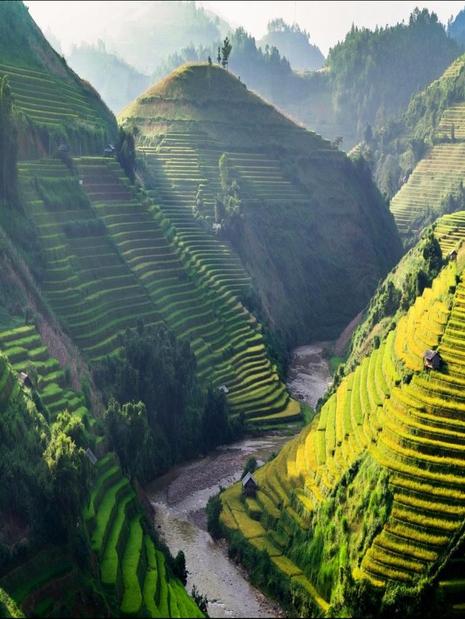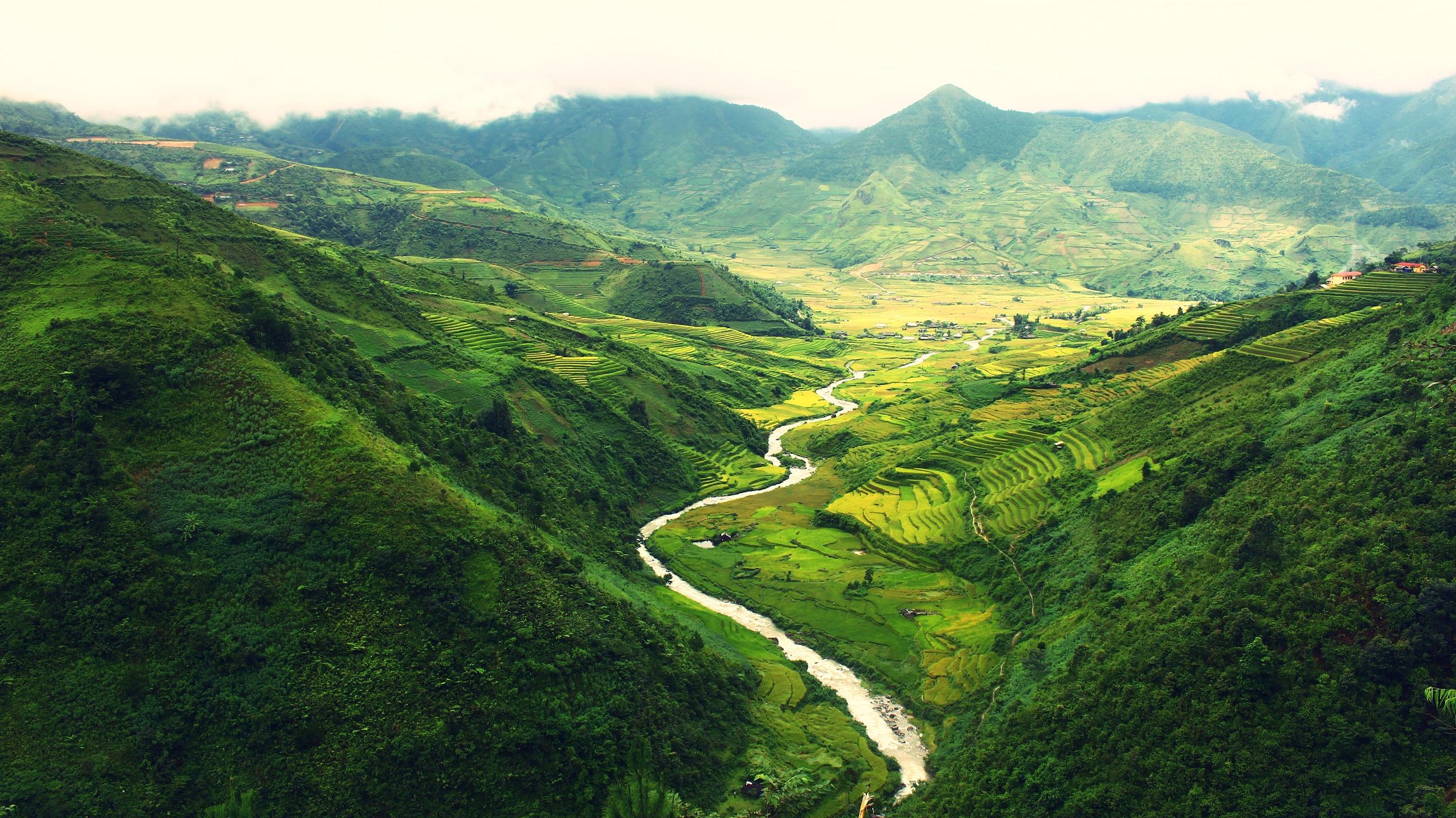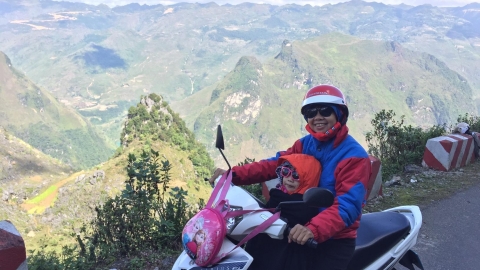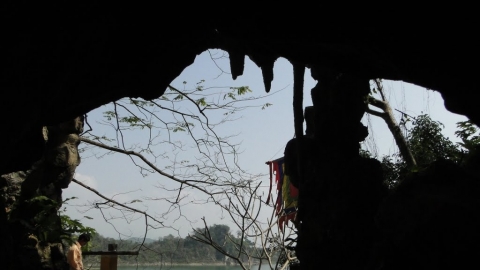Moc Chau - Ta Xua
The route I chose to start my journey to the Northwest was Hanoi - Moc Chau - Ta Xua - Hanoi. Located 300km from Hanoi, Moc Chau plateau is blessed with a cool climate all year round, an ideal destination for those who want to escape the hot and humid weather of the capital to find a peaceful and fresh place.

Moc Chau in the summer is covered with the fresh green of tea hills. Perhaps, in the North, there is nowhere where tea trees are grown on a large scale like in Moc Chau grassland. The image of green tea rows, winding, stretching from one hillside to another has become the trademark of this land, an endless source of inspiration for those who are passionate about travel and experience like me.
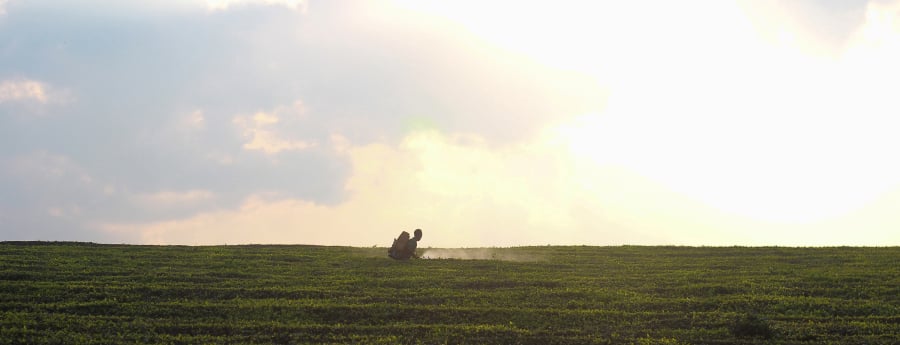

To have a little more experience close to nature, I decided to explore Chieng Khoa waterfall. Located only 20km from Moc Chau town center, Chieng Khoa waterfall is hidden in the middle of wild and majestic nature. I had to walk a short distance through bushes, grass and rice fields of the locals before admiring the first waterfall. The waterfall has many levels, each level has quite deep ponds, the water is light blue and clear. Just immersing myself in these cool streams of water makes all the heat and discomfort of summer days seem to disappear.
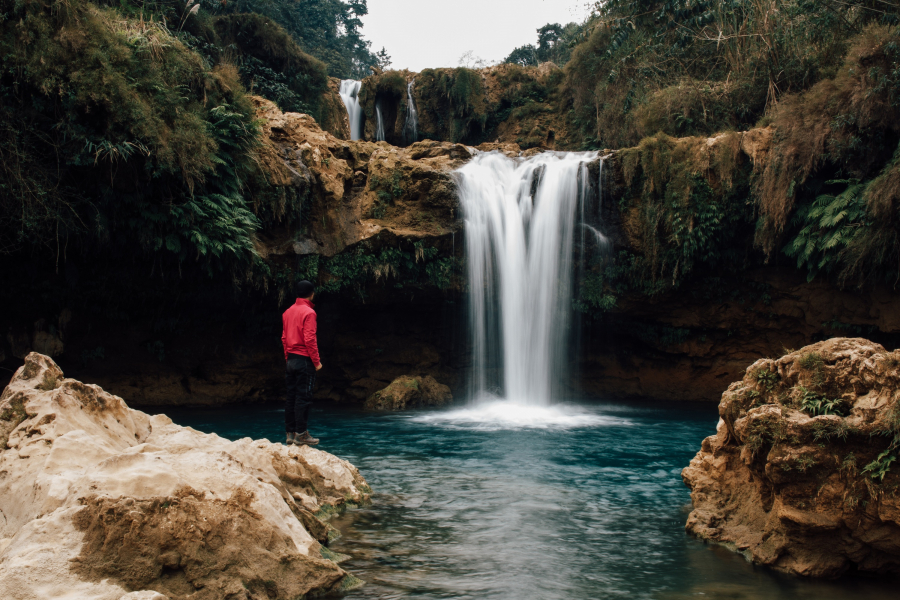
Returning to town after extremely interesting experiences, my choice was a homestay located on the steppe to fully enjoy the fresh air and immerse myself in nature.

From Moc Chau to Ta Xua is not too long, only about 100km, separated by the Van Yen ferry crossing the Da River. Ta Xua commune has long been famous as a cloud hunting paradise for travel enthusiasts or landscape photographers. The road from Bac Yen town to Ta Xua is not difficult, but contains many challenges for drivers. Due to climate and weather characteristics, Ta Xua in summer is often more difficult to hunt clouds than in winter. However, with a little luck, I can still wake up in Ta Xua with a sea of white, fluffy clouds drifting across the mountains and forests.
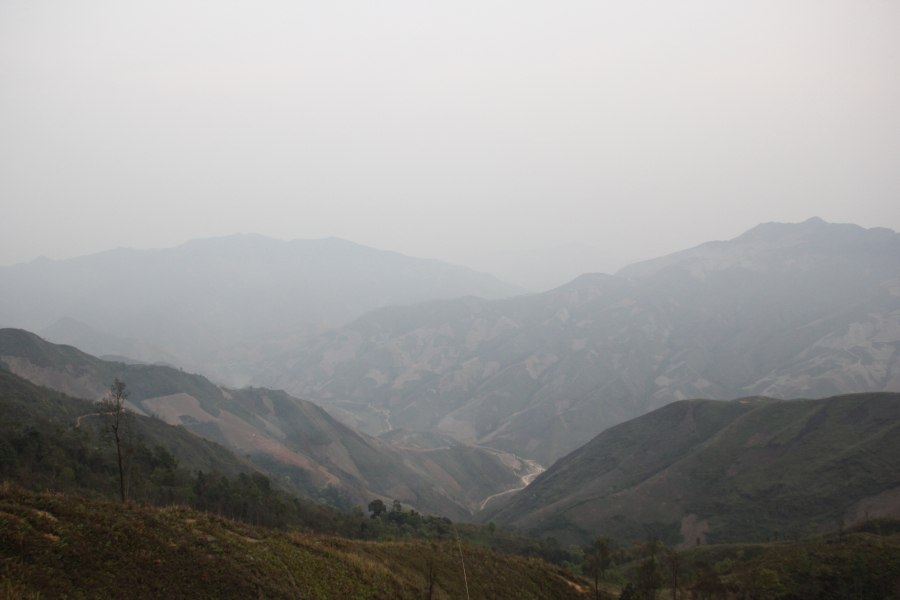
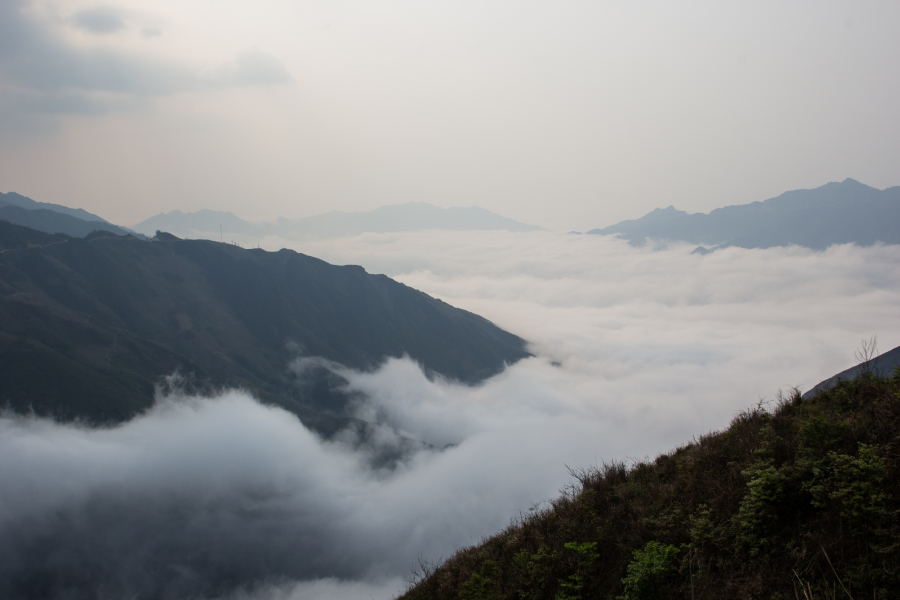
The most beautiful place to hunt clouds is the “dinosaur spine” on the central road of Ta Xua leading to Hang Dong commune. Mother Nature has bestowed this place a very special “bridge” in the middle of the sea of clouds. Walking on the “dinosaur spine”, touching the cool, thin mist, feels like floating in the misty clouds.
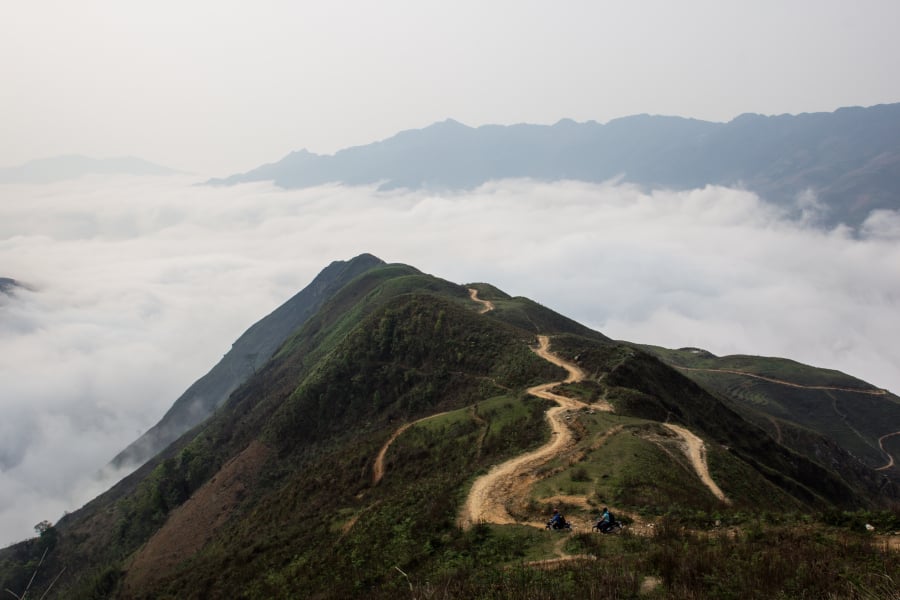
Sapa - Mu Cang Chai
Only about 300 km from Hanoi with the highway, the cool climate is the reason why Sapa has become the most ideal place to avoid the heat. With the motorbike route like mine, the best choice would be for both the motorbike and the passenger to take the train to Lao Cai, then get off the train and continue the remaining 35 km to Sapa town.
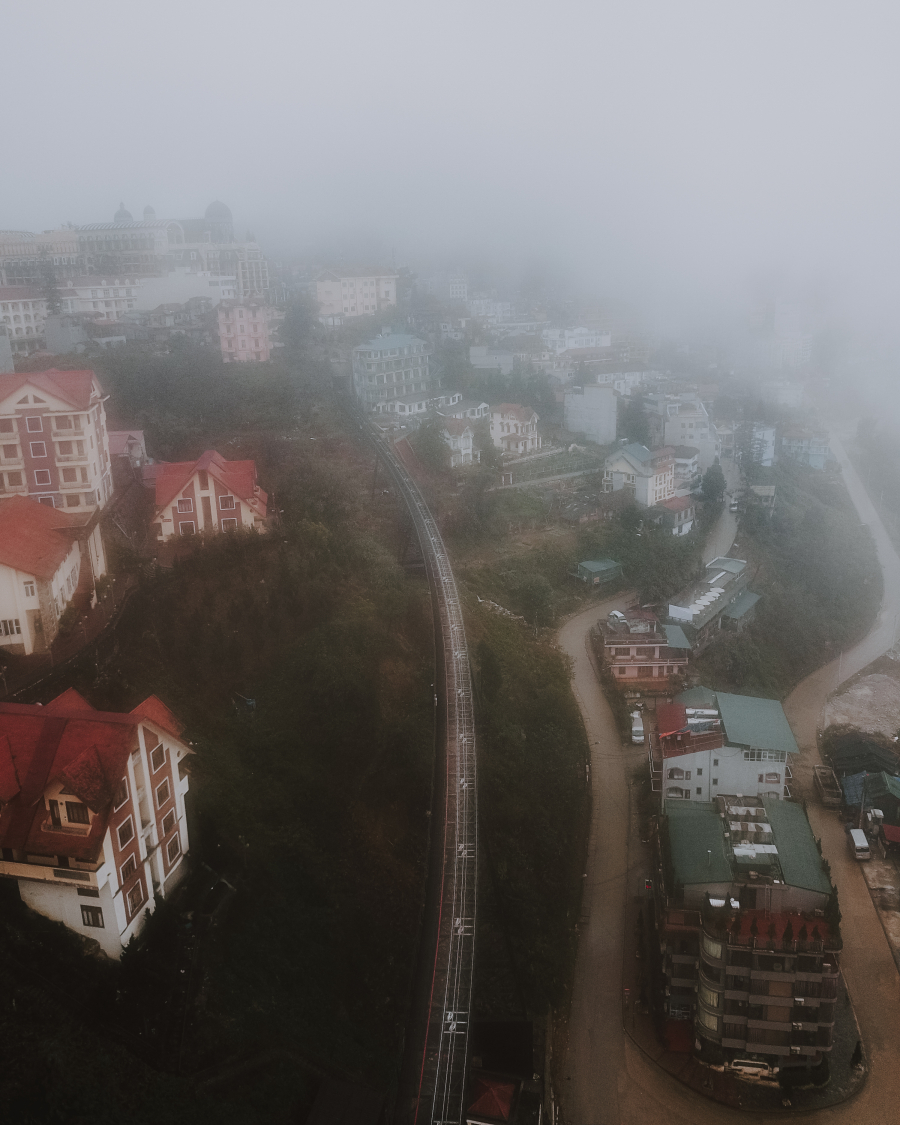
Arriving in Sapa, the first goal is to conquer the roof of Indochina - Fansipan mountain (3,143 m high). To get to Fansipan Legend cable car station, I traveled by the elevated train line that went through the town and across Muong Hoa valley. Sitting on the cable car, I experienced the feeling of wandering between the clouds and mountains, below was the green Muong Hoa rice valley, looming simple thatched-roof houses, the primeval Hoang Lien Son forest, and the rugged mountains thousands of meters high... Reaching the top of the mountain, my emotions surged as I stood in the middle of a fairyland, surrounded by only white clouds stretching to the horizon, letting my soul wander in the sacred, serene space of the Bich Van Thien Tu pagoda complex.
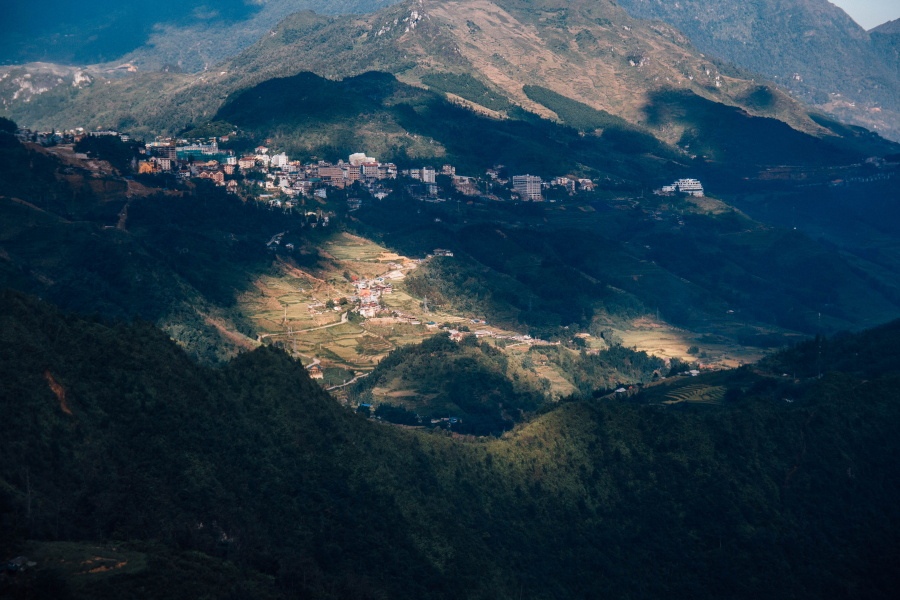
A little further from town, I went to Cat Cat and then Ta Van... the ethnic minority villages located rustic and peaceful in the mountains and forests. Here, I was immersed in the life imbued with local identity, bathed in Dao leaves, ate Thang Co, drank apple wine, and got to know the friendly and simple ethnic minority people.
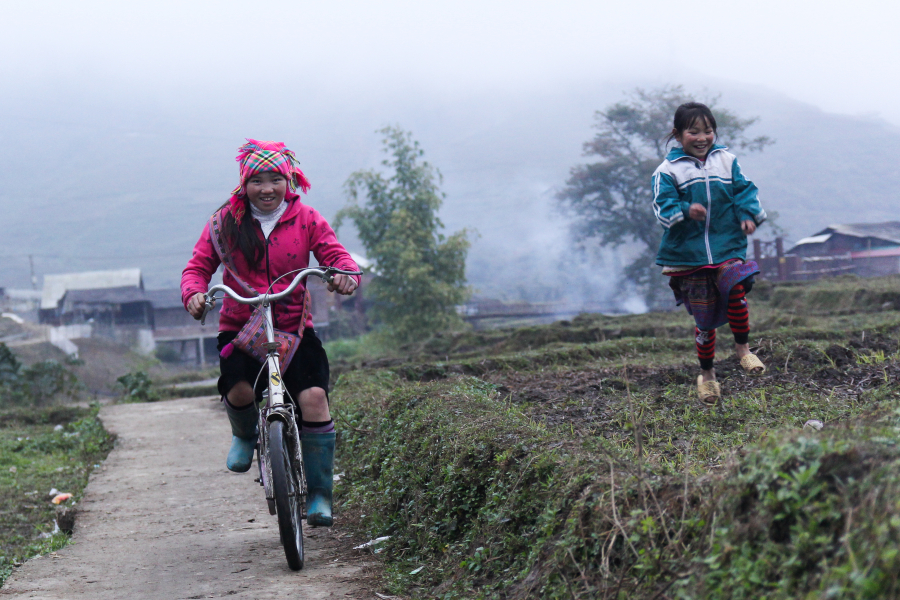
From Sa Pa to Mu Cang Chai was a journey full of emotions when I had the opportunity to conquer O Quy Ho Pass. This legendary pass stretches across Hoang Lien Son, connecting Lao Cai and Lai Chau provinces, and is one of the most dangerous mountain passes in the North. The Than Uyen - Tan Uyen route along Highway 32 has a poetic beauty with sections running along the Da River, with a hydroelectric lake with emerald green water, and colorful rice fields.
Every May and June, water from above fills the terraced fields halfway up the mountain. During this time, taking advantage of the high water level, ethnic people go to the fields together to plant rice. Layer upon layer of calm water surfaces, reflecting the golden sunlight of the summer afternoon, interspersed with a few hunched backs diligently sowing each seedling, creating a magnificent picture of nature and people that only Mu Cang Chai has. To fully enjoy the Northwest during the water pouring season, I made my way to the famous Mam Xoi terraced fields in La Pan Tan commune, which has the largest terraced field area in the region. Hunting the sunset at the "horseshoe" terraced fields in San Nhu commune or welcoming the sunrise in Kim Noi, watching the entire town of Mu Cang Chai in the early morning are also extremely memorable experiences.
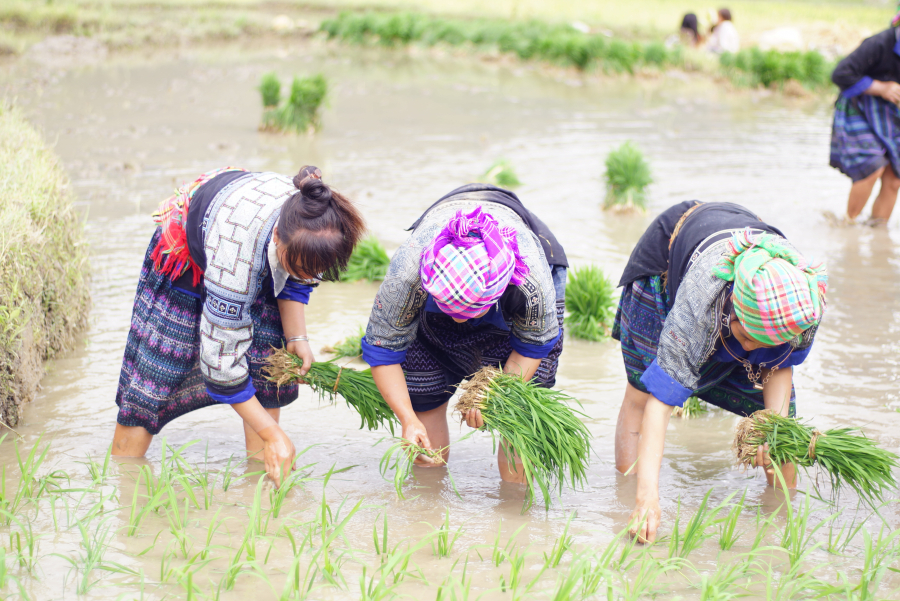
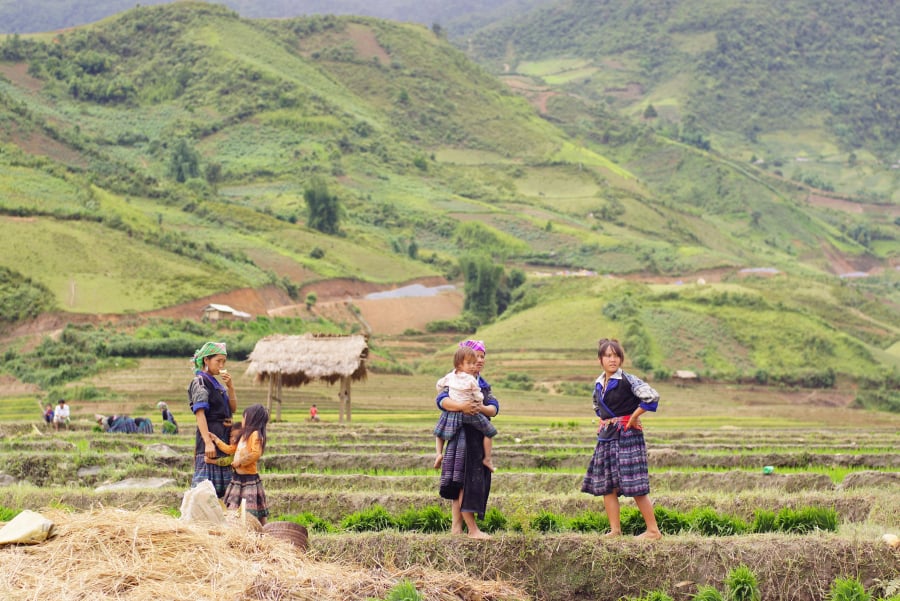
Khau Pha Pass, which means “Horn of Heaven” in Thai, is one of the four most dangerous mountain passes in the Northwest, but it is also the perfect pass to admire the beauty of Mu Cang Chai. Driving a motorbike between the sky, clouds and mountains, letting my soul drift into the wind and branches, immersing myself in the cool air of the old forest makes me feel so free and peaceful.
A tour of Ha Giang
Along the route to explore the Northern mountainous region, it is impossible not to think of Ha Giang, the northernmost point of the country. I chose the route Ha Giang city - Quan Ba - Yen Minh - Dong Van - Meo Vac - Du Gia - Bac Me for my journey this time. From Hanoi, I took a sleeper bus to Ha Giang city and then rented a motorbike to start exploring the rocky plateau. The first mountain route was quite simple, the wheels rolled quickly through famous landmarks such as Quan Ba Heaven Gate, Fairy Twin Mountains, Yen Minh pine forest... However, because I did not have much time on the weekend, I only stopped by, but could not fully enjoy the beautiful scenery on this route. Instead, I chose to spend most of my time exploring the Dong Van - Meo Vac - Du Gia routes.
DONG VAN
Located about 150 km from Ha Giang city, Dong Van district, along with three other districts, Quan Ba, Yen Minh, and Meo Vac, contributes to the formation of Dong Van Karst Plateau Geopark - recognized by UNESCO as a global geopark. But in terms of characteristics, Dong Van probably still has the most "stone" quality. Sharp cat-ear rocks, pointing straight up to the sky, appear all over the roads along Dong Van, rocks surround every branch of tree and blade of grass, rocks are interspersed between houses and terraced fields. People build houses with stones, cultivate on stones, live with stones, and die in stones.
In the middle of the Dong Van rock region, there is a small valley, green all year round with the color of fruit trees and flowers, that is Sung La. Amidst the dark and dense mountains, Sung La appears colorful and beautiful. The Mong people in Sung La grow all kinds of crops on the rocks, sometimes the bright pink and white buckwheat, sometimes the brilliant spring peach blossoms, sometimes the golden color of canola flowers. That is why Sung La is also known as the blooming rock region.
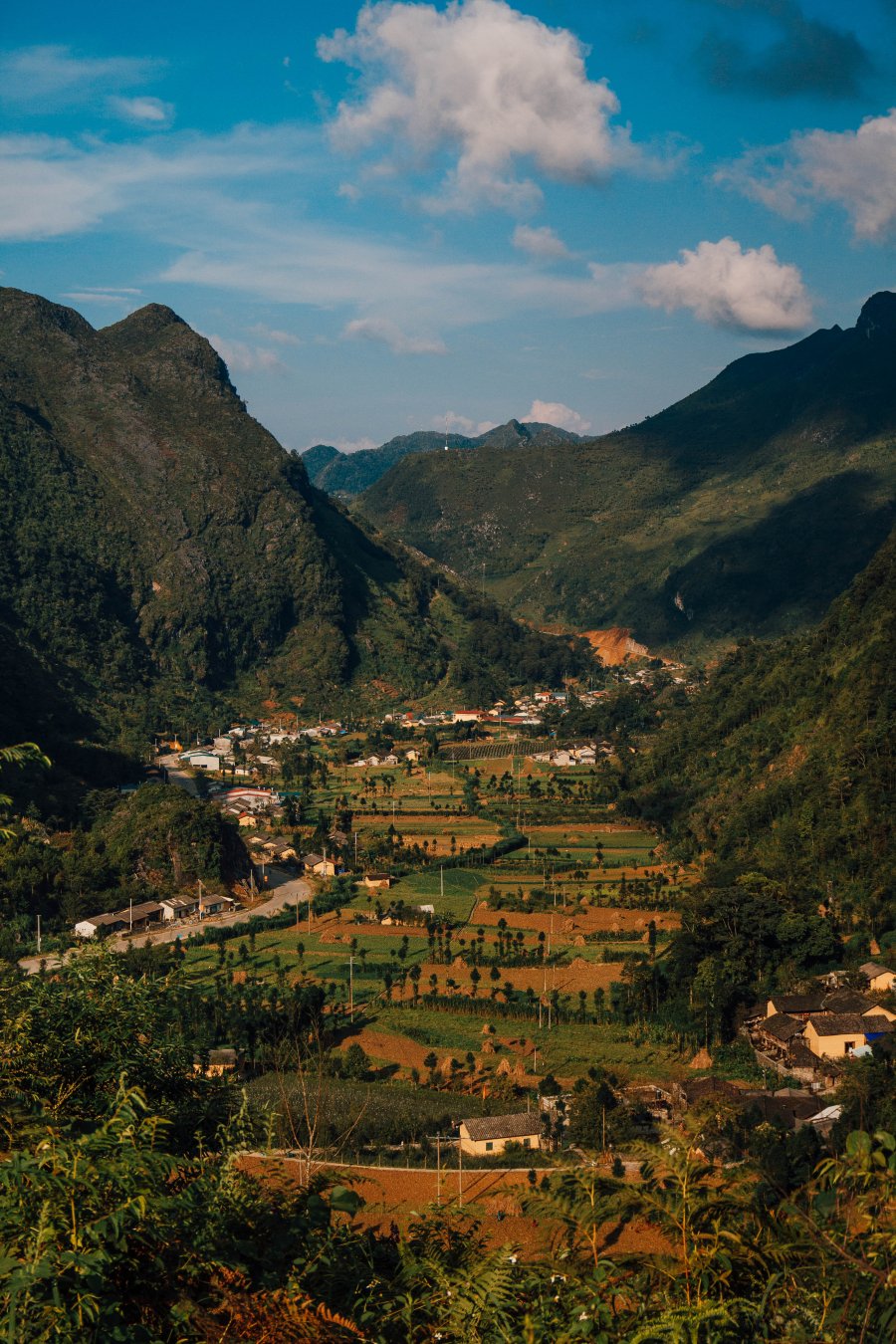
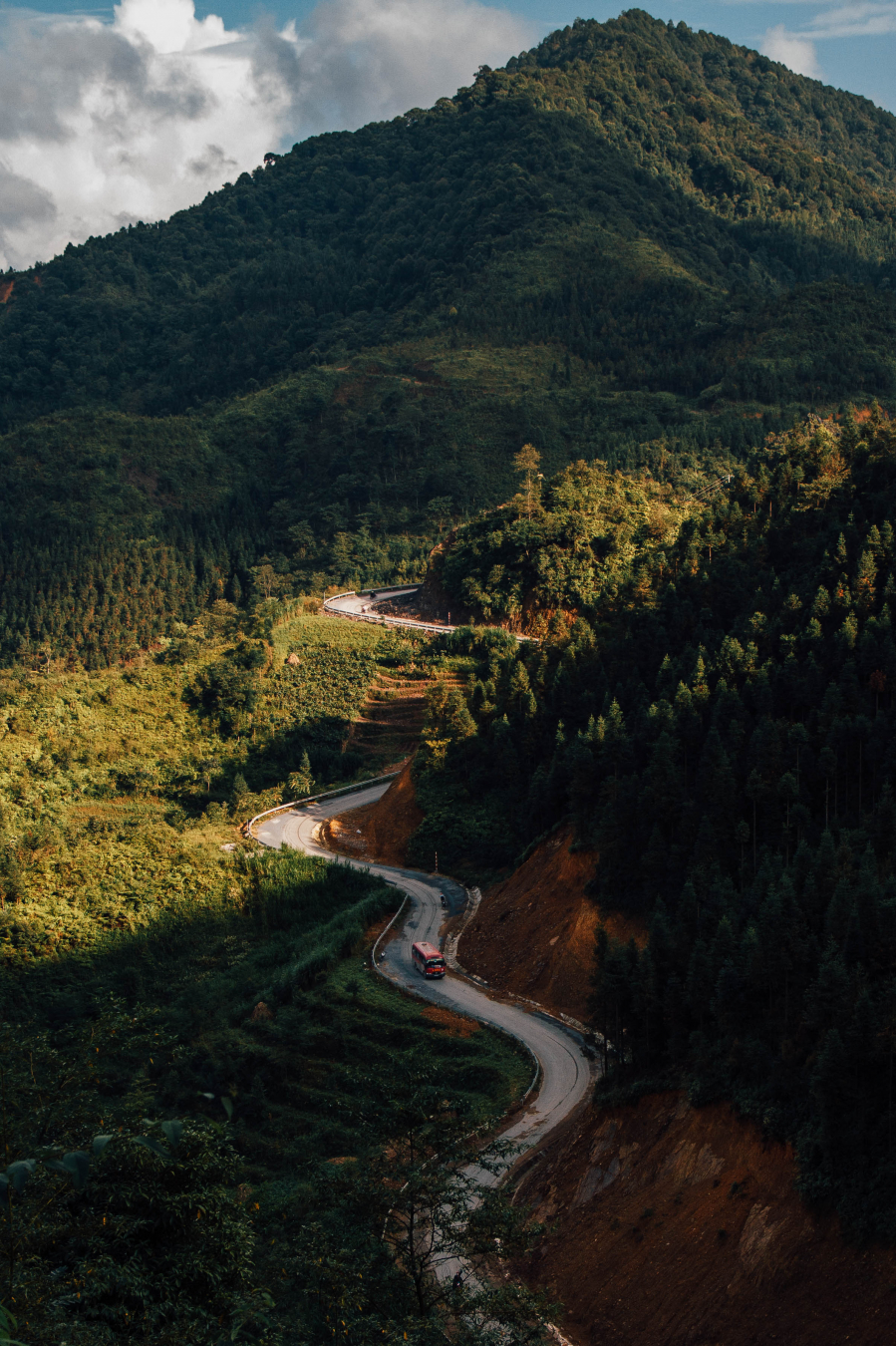
If Sung La appears full of vitality in the middle of the stone plateau, then Dong Van ancient town and Pho Bang town make me admire with their ancient beauty full of nostalgia. The rammed earth houses with tiled roofs imbued with the color of time, the wooden doors that are centuries old and the peaceful, calm atmosphere are what I found in these two places.
Along the way to explore the Dong Van stone plateau, I also experienced other extremely attractive places such as the Happiness Road, Tham Ma slope, Meo King Palace and most especially, climbing nearly 400 stone steps of Dragon Mountain to reach Lung Cu Flagpole - the Northernmost point of the Fatherland. Standing on top of the flagpole, above is the red flag with yellow star fluttering in the border sky, you will feel how sacred the two words "sovereignty" are.
Many people can check in at Lung Cu Flagpole, but not everyone can experience cloud hunting at Lung Cu Flagpole. Starting from Dong Van at 4am, I was at the top of the flagpole before dawn. When the first rays of sunlight appeared, the misty clouds gradually appeared, they crept through Lo Lo Chai village, through each Then Pa house. When the sun rose higher, it was also the time when a natural cloud wall was formed to clearly divide the boundary between heaven and earth. Above was the bright red sun, below was still the simple village obscured by kitchen smoke. Having admired this magical moment, I believe I am one of the luckiest travelers of the stone plateau.
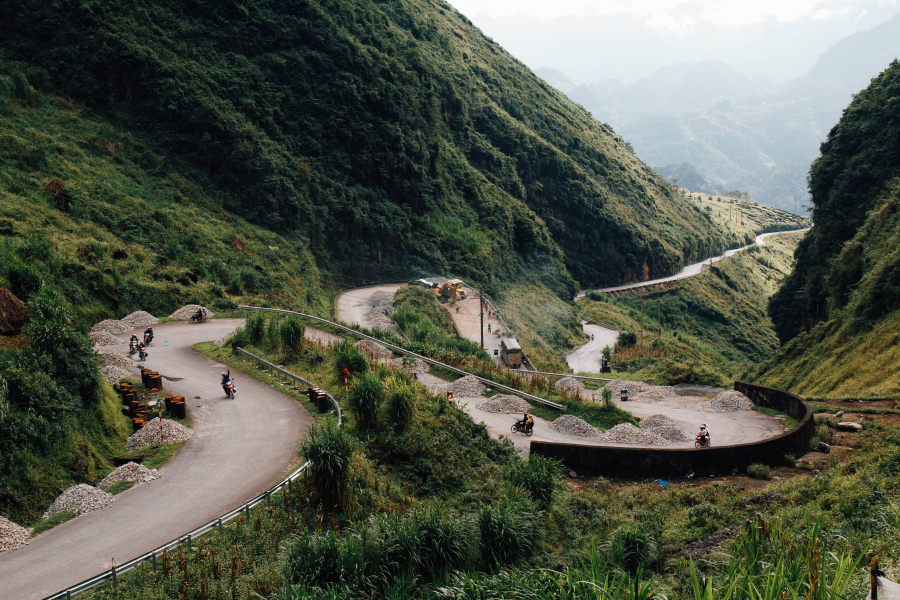
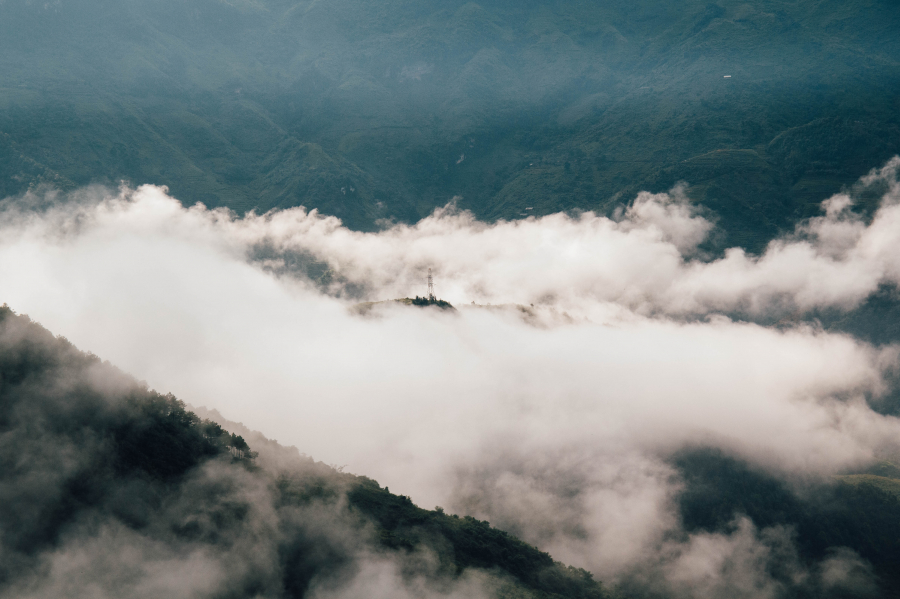
When coming to Lung Cu Flagpole, remember to visit Lo Lo Chai village. The Lo Lo people here regularly organize rain-praying festivals, forest god worshiping ceremonies, new crop celebrations... with the appearance of traditional folk dances, especially hundreds of years old bronze drums. Ethnic people in the village, in addition to living on slash-and-burn farming, now know how to open homestays to welcome tourists. Experiencing a night in Lo Lo Chai with the locals, enjoying traditional corn wine with leaf yeast and unique culinary dishes is truly interesting and memorable.
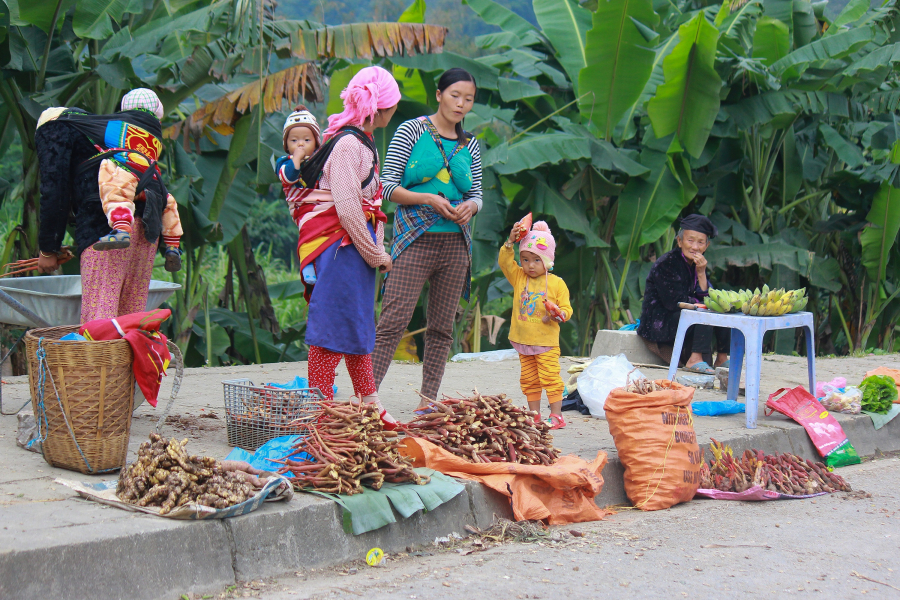
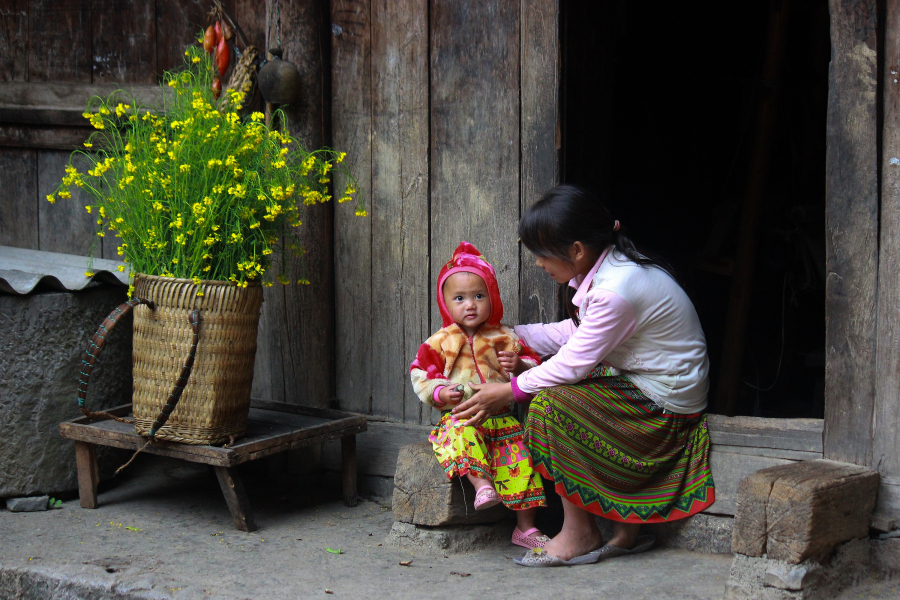
CAT VAC
From Dong Van to Meo Vac, I went through the most dangerous road in Vietnam - the first Ma Pi Leng Pass. Standing on the top of Ma Pi Leng Pass, which is over 2,000m high, looking far away to see the whole space of clouds, sky and mountain wind, only then did I feel the greatness of creation, overwhelmed by the majestic natural picture of this harsh mountain region.
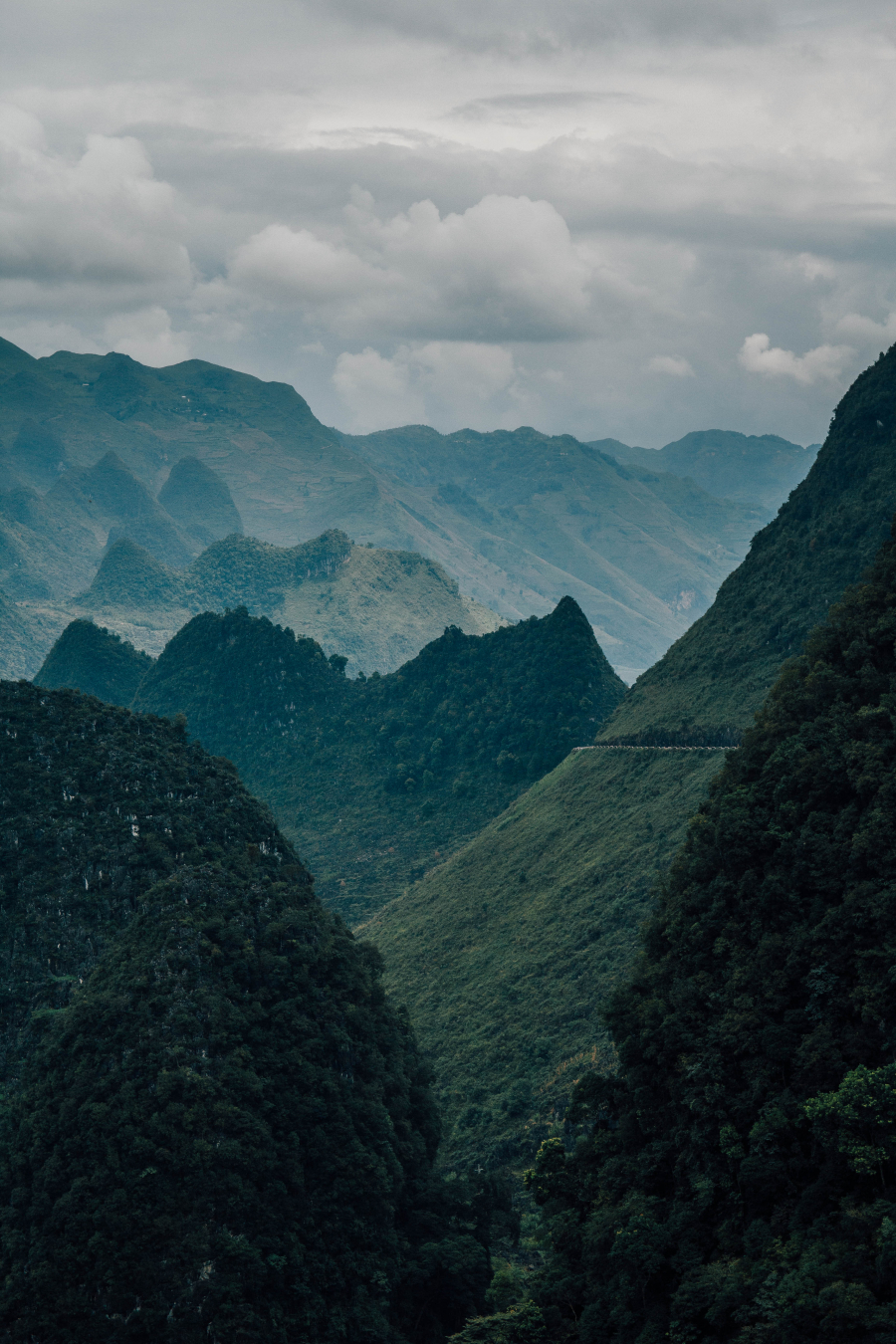


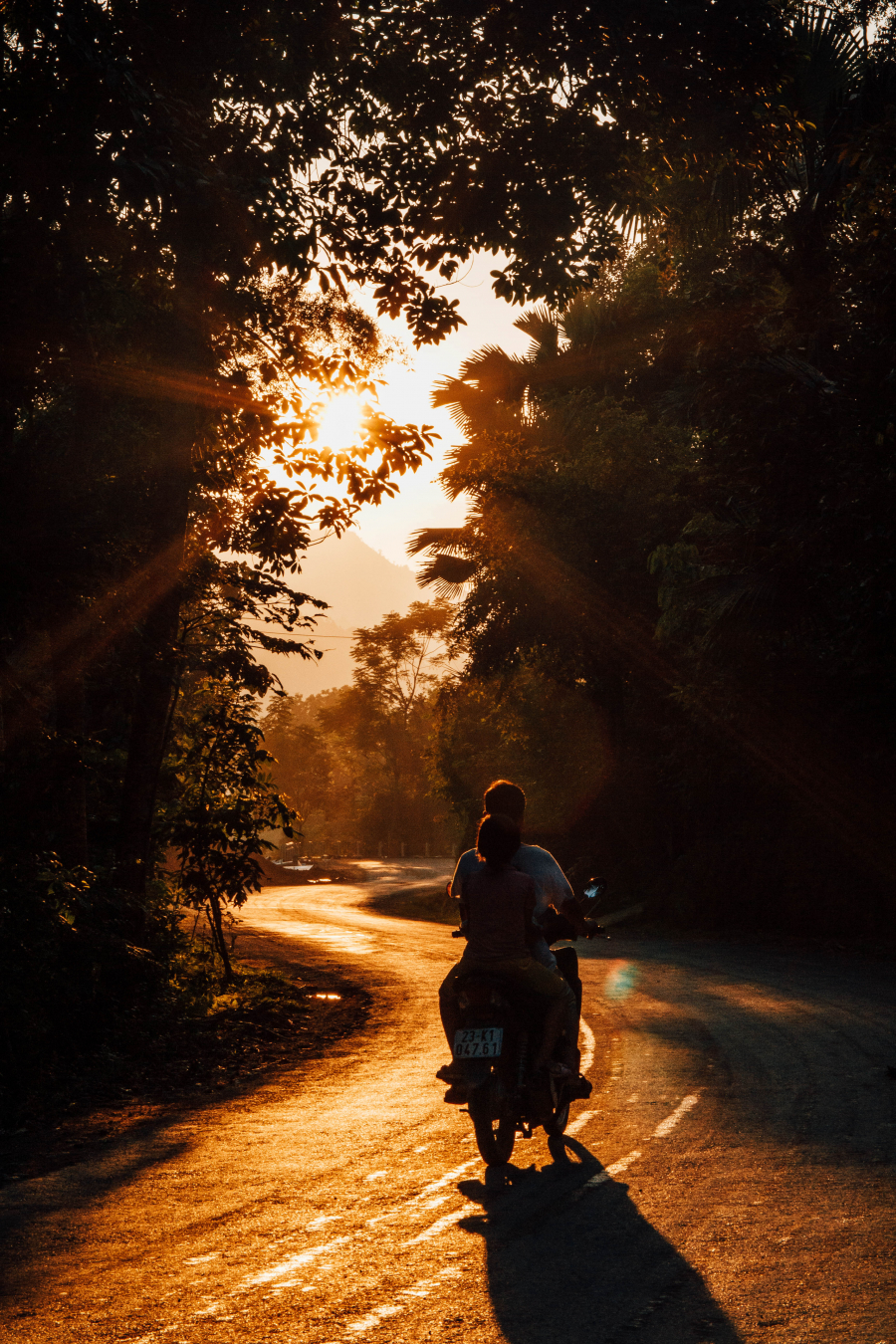
If Dong Van is famous for its small towns and ancient relics, Meo Vac is a place where the unique cultures of ethnic minorities converge, the most typical of which are the fairs. Coming to Meo Vac in the summer, I can immerse myself in the bustling atmosphere of the markets... In addition to buying some souvenirs, I can also enjoy the specialties of the Dao and Mong people such as Meo Vac mint honey, grilled moss, and braised pork...
YOGA
Passing Meo Vac, instead of returning to Yen Minh road, I chose to continue towards Du Gia - Mau Due before returning to the city.
After a night's rest, I woke up early with the goal of hunting clouds at Deo Gio, the pass connecting Du Gia and Lung Ho town, hanging between the rocky mountains like a small thread. Early in the morning on the top of the pass, the fog and clouds covered the path, I had to find a high hill to be able to capture the scene "emerging" among the clouds. If the clouds in Lung Cu were neatly located in the valley, the clouds in Deo Gio filled the mountain tops and roads, stretching endlessly. Combined with the slanting sunlight of the early morning, the sky and earth appeared under the clouds, becoming shimmering and magical. Perhaps there are not many words that can describe this beauty!
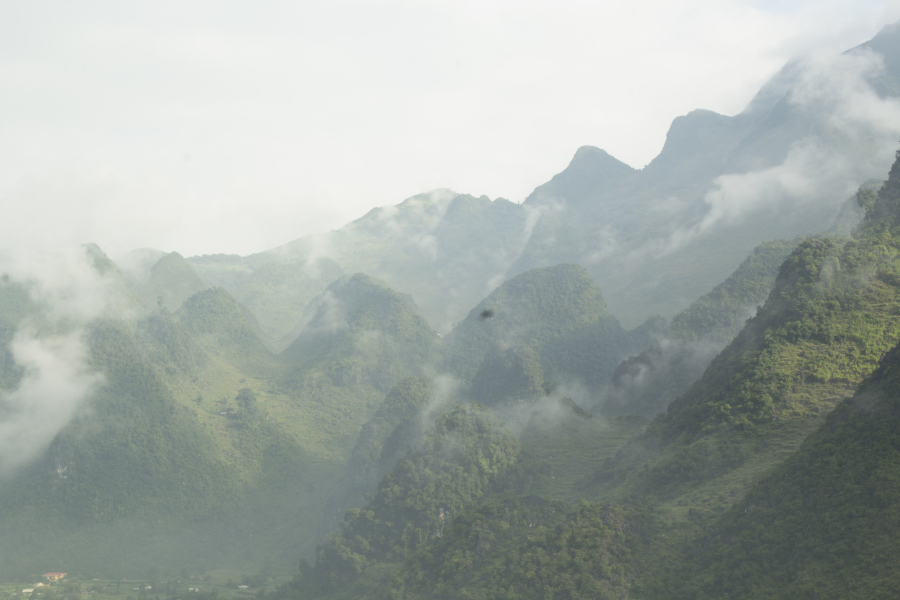

Continuing along Deo Gio, back towards Lung Ho, I felt like I was floating in paradise, with only wind, clouds and a small car rolling on the winding mountain pass. The cloud hunting journey ended when I arrived at Lung Ho, a small town surrounded by wild mountains on all sides. However, life here is extremely bustling and busy. Luckily, I came here on Sunday, I got to experience the interesting weekend market.
After that, I did not forget to return to Du Gia, there is also an extremely attractive place here: Tham Luong waterfall. To get to the waterfall, you must have a local guide, have to walk across fields, strange small caves... The waterfall is small, with only one floor about 4m high, but do not be subjective because the pond at the foot of the waterfall has a section nearly 3m deep. There is nothing more wonderful than relaxing in the cool water after a long journey of exploring Ha Giang. I even borrowed swimming goggles from the Mong children to catch fish in the clear water, chasing schools of small fish swimming around, which was really interesting.
With its wild and diverse mountainous landscapes, and the blend of many ethnic minority cultures, the mountainous region of Northern Vietnam is always an attractive destination for domestic and foreign tourists. For those who love nature and want to freely immerse themselves in the clouds, sky and mountain winds, conquering these roads will certainly be a magical experience in the sunny summer.


Prepare for the journey with a motorbike:
- Make a reasonable itinerary, including determining the most basic information such as place names, routes, places to stay and eat... Everything should be detailed, concise and easy to remember.
- Follow the principles of motorbike maintenance, especially regular oil changes, tire checks, brake checks... before departure. If you are traveling alone, equip yourself with the most basic motorbike repair skills.
- Prepare your belongings, protective gear and personal belongings. The best protective gear should be specialized protective clothing for long trips, a good quality helmet. Your belongings and personal belongings should be as minimal as possible, along with raincoats, a first aid kit, vehicle repair tools...
- Also, prepare colorful clothes. This will help you stay safer on the road.





